
The Yamaha R-500 receiver was released in 1981 as part of Yamaha’s popular R-Series line. At the lower end of the R-Series lineup, the R-500 provided adequate power at 40 watts per channel and all the necessary features of a low to mid-range receiver. It retailed for $330.
Designed to provide low distortion, wide frequency response, and high power output, Yamaha used key components to achieve this performance. The amplifier section uses negative feedback techniques to reduce distortion. The preamplifier features low-noise circuitry and a flat RIAA equalization curve for accurate phonograph reproduction. The AM/FM tuner provides excellent sensitivity to deliver clean, static-free reception.
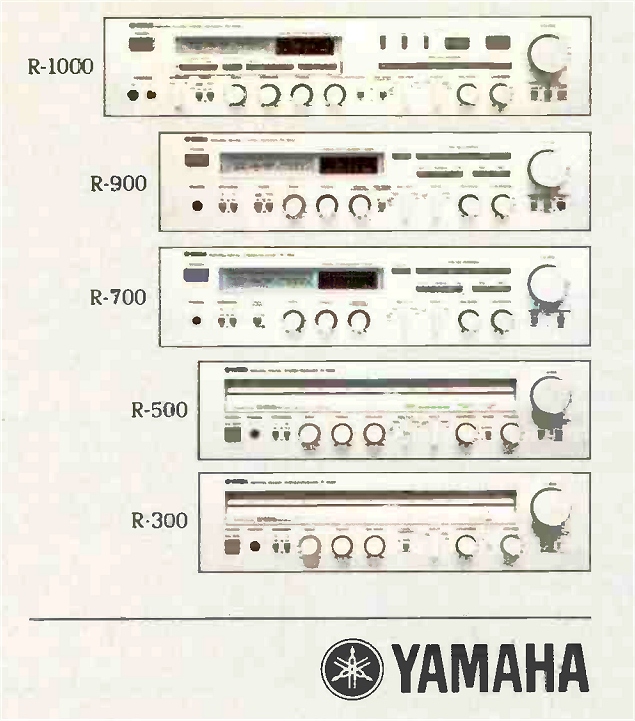
The Yamaha R-Series of receivers included the top of the line R-2000 ($900 – 150 wpc) as well as the R-1000 ($700 – 100 wpc), R-900 ($550 – 70 wpc), R-700 ($450 – 50 wpc), R-500 ($330 – 30 wpc), and R-300 ($260 – 30 wpc).
The R-500 has a sleek design and a metal cabinet covered with faux wood veneer.
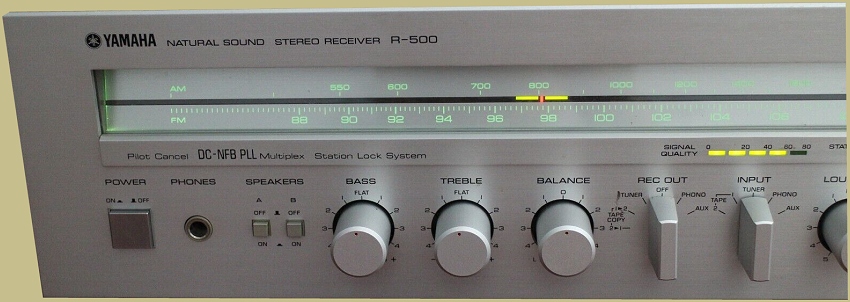
Front Panel
The R-500 includes all of the features expected in a mid to high end receiver of that era. The front panel has bass, treble, and balance controls and smooth acting switches for Rec Out selection and Input selection. There are push button controls for speakers, stereo/mono mode, AM/FM tuner selection and FM muting. An LED signal quality meter sits just below the dial scale. A headphone jack is next to the power push button.
Optical Balance Tuning
The R-500 receiver has a visual tuning aid that Yamaha called Optical Balance Tuning to simplify finding optimal station reception. As a user tunes across the AM or FM bands, LED lights on the dial pointer provide visual feedback for precision tuning.

As a station is approached during tuning, the LED on the opposite side of the meter pointer will illuminate to indicate the presence of a signal and the need to reverse direction. Once tuned to the station’s exact center frequency, both LEDs light up simultaneously. This optical indication eliminates guesswork by clearly showing when a station is perfectly tuned.
Tuner
The R-500 utilizes a DC NFB PLL Multiplex demodulator design to separate left and right audio channels. Typical demodulators switch the composite signal on/off rapidly, causing distortion. The R-500 avoided this by incorporating the switching into a DC amplifier’s negative feedback loop (NFB). This eliminates switching distortion while providing wideband frequency response.
A phase-locked loop (PLL) circuit effectively rejects interference. The design achieves excellent channel separation, low distortion, and fast transient response. By minimizing artifacts in stereo demodulation, the R-500’s DC FM circuitry provides excellent FM audio quality free of switching noise or crossover effects.
When receiving a weak, noisy station, an Auto Blend circuit is automatically activated to reduce high frequency hiss. When stronger stations are tuned in, the circuit is disabled to provide best stereo separation.
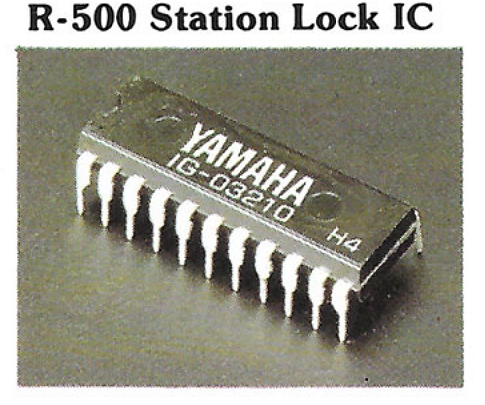
Station Lock
The Yamaha R-500 receiver features an FM tuning aid called Station Locked Tuning. After manual tuning approaches a station, Station Lock will automatically lock onto the exact station center frequency for optimal reception. This ensures perfect tuning even with quick or imprecise manual tuning. A user can tune roughly near a station, and Station Lock will engage to fine-tune to the ideal point. An LED indicates when activated.
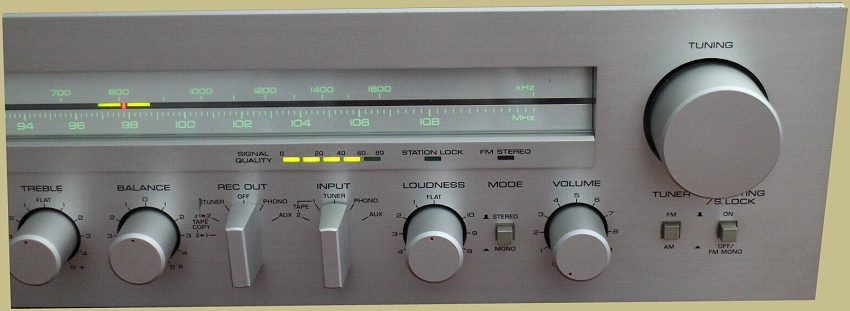
Continuously Variable Loudness Control
The Yamaha R-500 has an advanced loudness control system. Most receivers have loudness switches that boost low and high frequencies at low volumes. But these only optimize one volume setting.
Yamaha’s loudness control is continuously variable. As volume decreases, it progressively accentuates lows and highs to match the ear’s natural sensitivity changes. This preserves tonal balance across all listening levels. Rather than directly boosting bass/treble, Yamaha’s circuit subtly cuts midrange frequencies. This avoids adding noise or distortion.
Basically, the idea is to set the Volume control to the loudest volume level you wish to listen to, and then use the Loudness control to reduce the sound output to the desired loudness level for your listening pleasure at any given time.
Specifications
Here are the specifications for the Yamaha R-500 from the manual.

Phono Equalizer
The Yamaha R-500 contains a high-performance phono equalizer stage designed to optimize playback from vinyl records. The equalizer amplifies the low voltage output from the phono cartridge and applies RIAA vinyl record equalization for flat frequency response.
Phono equalizers must amplify signals substantially, so any noise present gets boosted dramatically. The R-500’s phono stage provides an excellent 85 dB signal-to-noise ratio (IHF A network, 5 mV input). This low noise ensures accurate amplification of even small cartridge signals without added noise or hum allowing the R-500 to fully reproduce the wide frequency response and low noise floors available on high quality vinyl pressings.
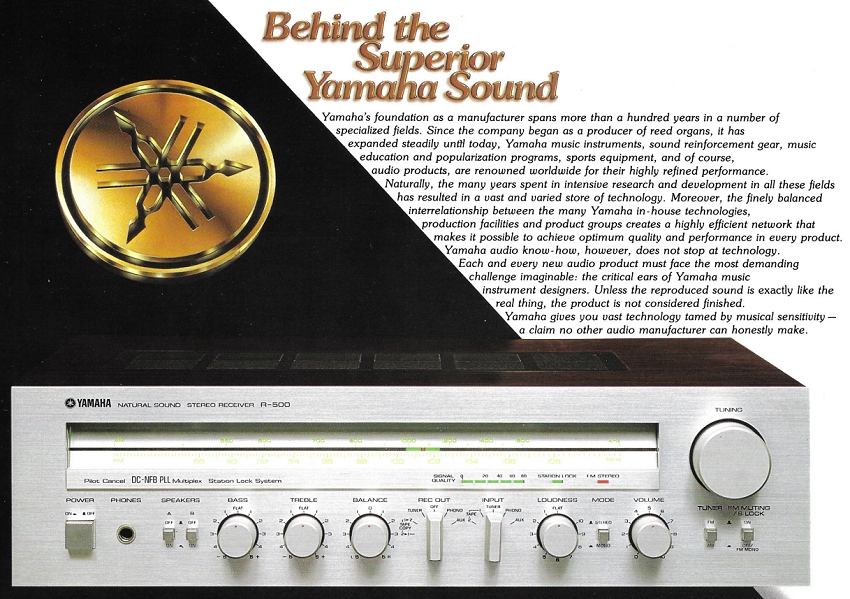
Amplifier
The R-500 utilized an advanced for the time amplifier design called DC output capacitorless (OCL). This employs DC gain with complementary bipolar power supplies and current mirror circuits. The OCL design gets rid of output capacitors. This maintains ultra-low distortion beyond the rated power output rather than increasing distortion at high volumes. The pure DC amplification provides linear response, high current delivery, and wide dynamic range.
The result of this amplifier design is an output of 40 watts per channel into 8 ohms with total harmonic distortion (THD) under 0.015%.
To further improve audio fidelity, the R-500 receiver incorporates a subsonic filter in its internal circuitry. This filter automatically removes ultra-low frequencies below the normal audible range that can introduce unwanted noise or speaker distortion.
Sources like warped records or turntable motor rumble can produce inaudible subsonic signals. These very low frequencies provide no musical content but can potentially overload speakers and amplifiers. The R-500’s fixed subsonic filter acts as a high-pass filter, attenuating frequencies below 20 Hz to remove subsonic noise before it reaches the speakers.
By filtering out these unwanted lows without affecting musical content, the subsonic filter enhances reproduction quality. It prevents muddiness or distortion caused by extraneous subsonic signals emanating from a turntable or recording.
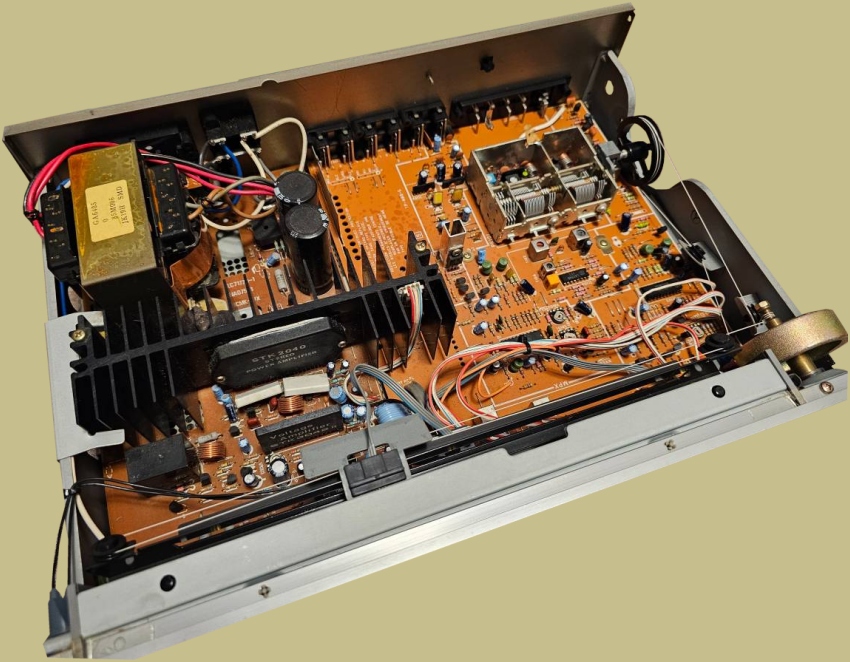
The rear panel contains inputs and outputs for a turntable, two tape decks, an aux, and two sets of speakers. There is one switched and one un-switched AC outlet.

For those who favor a more 1980’s look over the earlier 1970’s fully analog, silver faced receivers, the Yamaha R-500 is a good choice. It has enough power for an average room and just enough features to satisfy most users. While the R-series doesn’t get much attention they are actually pretty well built and perform well. They are also quite a bit cheaper than the earlier, and more popular, CR series. In fact, even the top of the line R-2000 isn’t that expensive.

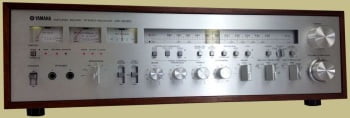
Good article, thanks for sharing.
Nice sounding unit – typical Yamaha: clear and musical.
Watch cold soldering joints if sound is intermittent in these old units.
It has protection relay, which is nice, but should be cleaned too
alone with pots and RCA input contacts as you service it.
Article has a typo – R-500 ($330 – 30 wpc). Should be 40 wpc.